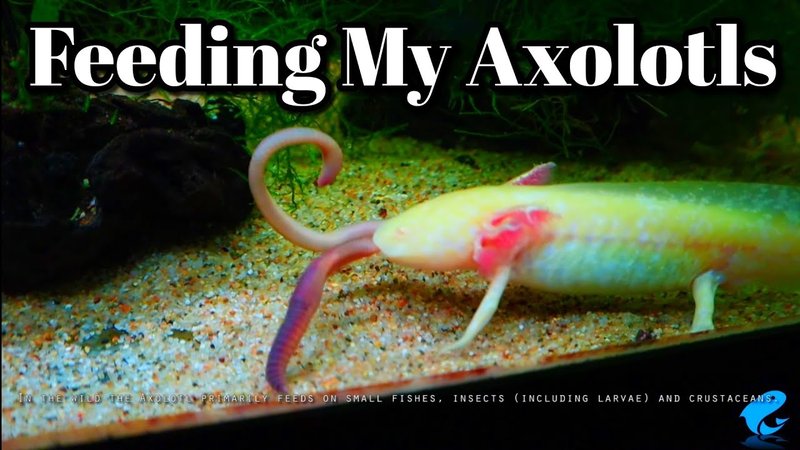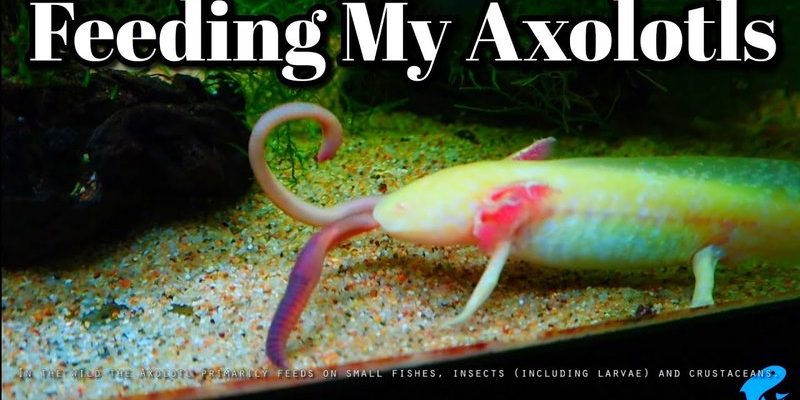
Here’s the thing: the diet of an axolotl is a mix of proteins, vitamins, and minerals. They’re carnivorous, so their meals revolve around protein-rich foods. But don’t worry, you don’t need to be a marine biologist to figure it out! In this guide, we’ll dive into what axolotls eat, how to prepare their meals, and some tips for keeping them healthy and happy. Let’s get started!
The Basics of an Axolotl’s Diet
Axolotls are naturally carnivorous, which means they thrive on a diet high in protein. In the wild, they eat small fish, worms, and insects. But when you have one as a pet, you’ll need to replicate this diet as closely as possible to ensure they stay healthy. The right meals can help support their growth, keep them active, and even promote good regeneration of their limbs and tail.
You might be wondering, “How do I know if I’m feeding them the right stuff?” A good rule of thumb is to focus on foods that are easy for them to digest and packed with nutrients. Live foods, like bloodworms and brine shrimp, are great options, while pellets or flakes designed specifically for axolotls can also be a convenient choice. Just make sure whatever you choose is formulated for their dietary needs.
Live Foods: A Treat for Your Axolotl
Live foods can be a delightful treat for your axolotl. Not only do they mimic what these creatures would eat in the wild, but they can also stimulate your pet’s natural hunting instincts. Popular choices include:
- Bloodworms: These small, wriggly critters are a favorite among axolotls. They’re rich in protein and easy to find at pet stores.
- Brine Shrimp: Another great option, brine shrimp are nutritious and can be easily kept in your freezer for a later date.
- Daphnia: Also known as water fleas, daphnia are tiny crustaceans that are perfect for feeding your axolotl.
When feeding live foods, you might consider using a feeder stick or tongs. This way, you can safely present the food without putting your fingers too close to their hungry mouths—trust me, they can be quick!
Prepared Foods: Convenient and Nutritious
While live foods can make for an exciting meal, prepared foods are just as important. You can find specially formulated axolotl pellets that are nutrient-rich and easy for them to digest. Here’s why you might want to consider them:
– Convenience: Prepared foods are easy to store and serve. Just pour the right amount into the tank, and you’re done!
– Nutrient Balance: Many brands create pellets that are balanced for axolotls, ensuring they get all the essential vitamins and minerals.
– Less Mess: Using pellets can reduce the risk of overfeeding or pollution in the water, which often comes with live foods.
Just remember, when introducing prepared foods, do it gradually. This will help your axolotl adjust without any digestive issues.
How Often Should You Feed Your Axolotl?
Feeding frequency can vary based on your axolotl’s age and size. Young axolotls typically need to be fed more often than adults. Here’s a simplified guide:
- Juveniles (under 6 months): Feed them daily.
- Adults (6 months and older): Feed them every 2-3 days.
Keep an eye on your axolotl’s behavior and weight. If they seem hungry or aren’t growing as they should, you might need to adjust their feeding schedule. It’s normal for them to be a little sluggish sometimes, but if they’re showing a lack of appetite consistently, that could be a signal of a bigger issue.
Common Mistakes in Feeding Axolotls
Even seasoned axolotl owners can make mistakes when it comes to feeding. Here are a few common pitfalls and how to avoid them:
– Overfeeding: It’s tempting to spoil your axolotl, but overfeeding can lead to health issues like swim bladder problems or obesity. A good rule is to offer an amount they can consume in a few minutes.
– Ignoring Water Quality: Uneaten food can decay and pollute the water. Make sure to remove any leftovers to keep the tank clean.
– Feeding Inappropriate Foods: Avoid feeding your axolotl things like lettuce or fruits. They need a protein-heavy diet for optimal health.
By keeping these points in mind, you can help ensure your axolotl remains healthy and happy!
Some Fun Extras: Treats and Variety
Keeping your axolotl’s diet varied can boost their appetite and overall health. You can occasionally treat them to frozen or live blackworms, which they often enjoy. Another fun option is to offer them small chunks of earthworms or waxworms as a special snack.
However, you should keep in mind that these treats should only make up a small part of their overall diet. Think of it like dessert—a little is nice, but it shouldn’t be the main course!
Feeding your axolotl the right way is key to their health and vibrancy. From choosing the right live foods to incorporating high-quality prepared options, you can create a balanced diet that suits their needs. Remember to keep an eye on their feeding habits and adjust accordingly.
With a bit of care and attention, your axolotl can thrive and bring joy to your home. Happy feeding!

